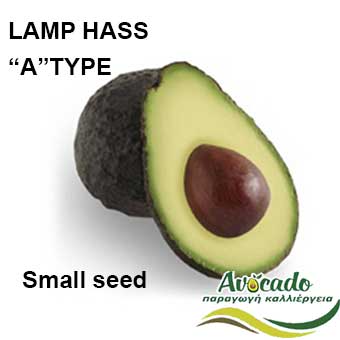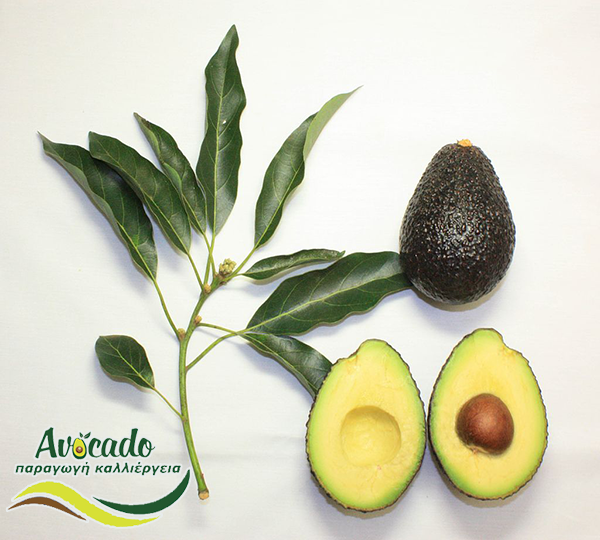Growing Avocado
The tree of avocado or Persea americana is evergreen, up to 20 m tall tree, is usually a sphagnum with green shoots that break several times easily. It is considered to be superficial, so the mechanical treatment of soil for weed control destroys much of the root system.
Vegetation and flowering periods Avocado
The avocado tree has 2 to 4 vegetation periods a year, providing greens, medium size and small size (less than 3 cm) shoots.
The root system of the Avocado tree is superficial, with approximately 80% of the root being at a depth of 60 cm.
Avocados carpeting.
When growing avocados, the Avocado Tree usually carries fruit from mixed eyes (“eyes”), which are at the edge or lateral to branches of the previous vegetation period.The new fruits grow in the shoots of the current season.
The end portion of the main branch of the flower arrangement of a plant in the avocado branches of inflorescence usually remains vegetative.
At this juncture, with the growth of new fruits, the stem part develops in parallel. The central axis of the inflorescence, most of the time, results in a scaphoid eye (stem branch)
b. Differentiation of avocado eyes
Differentiation of eyes (“eyes”) to fruit is usually done 6-8 weeks before bloom

c. Flowering avocado season
When growing avocados, the avocados blooming time and time depend on factors such as the type of avocado variety and prevailing climatic conditions.
Varieties of avocados are divided into 3 main categories in early avocado varieties, medium avocado varieties and late varieties.
Avocado trees and plantations have high temperature requirements to ensure the fertilization of the flowers that will give fruit. Necessary temperatures during day 26 oC and nighttime temperature 16 oC)
It is also necessary to have atmospheric humidity (to the 67% moisture level necessary for potting, For the cultivation of avocados, chlorine-free water and soil with low content of calcium carbonate without salinity, with very good permeability and drainage, and fertility.
It is especially important for avocados cultivation before any planting of avocados seedlings to carry out chemical analysis of the soil.
In soils with low calls without substantial drainage, it is very important to drainage channels and cultivation and planting of avocados on sandbanks.
For avocados, it is extremely important to make the right choice of avocados and the appropriate subject to withstand the cold and the diseases. Also, it is versatile to moisture, ensuring the rapid growth of the plant, its endurance and its efficient yield
Early varieties avocado
Early variety is Mexican, which begins their bloom from January or February.
Mexican avocado variety (including Zutano, Bacon, Reed). The varieties that are more widely known include Zutano, Bacon and Reed. They have mostly orthogonal vegetation. Their fruits on average have a lower fat content.
The most suitable subjects of the Mexican variety are the
avocado Mexico , avocado Topa-Topa , avocado Mexicola, Diuk. Importantly, subjects or clones of susceptible avocado varieties tolerant to the pathogenic phytophthora cinnamoni virus such as Diuk 7-9, Diusa, Toro, Canyon, VC256 and Evestro-UC2036 which have to be imported directly into our country) and Zutano secondary and Bacon, which however dominate our nurseries and are last in the classification of resistance to diseases and dampness.

The best harvest time for avocados of the Mexican variety Zutano, Bacon, Fuerte) is January-February
Mexican avocado varieties are generally not considered as commercial varieties but cover the breadth of demand for the Winter season.
In this type of avocado, the fruits are small, with thin skin like a membrane and a relatively large knuckle. The leaves are small, and when rubbed they have the characteristic smell of anise or stink. Flowers are more fluffy than those of other types.
Flowering – Maturation – Avocado Fruit Zutano, Bacon, Reed
Between flowering and maturation, a period of 6-8 months is required. It is the most cold-resistant type (leaky trees, withstand temperatures of -6 ° C) but is vulnerable to salinity (mainly chlorine and excess calcium carbonate).
Mexican-style fruits, despite the very good taste of their flesh, have little commercial interest because of their small size. However, trees of this type are very useful for hybrids (their seeds are used to give subjects for vaccinations). Some such varieties introduced for avocados cultivation in our country are the variety Topa-Topa avocados and the Yanta Avocado variety .

But the Mexican variety as well as Guatemala’s avocado variety are generally stronger in frost conditions and suitable for growing avocados in our country.
The maximum harvest time of the Mexican avocado variety is much smaller than that of Guatemala. This is why growers choose to harvest the harvest much earlier.
The reputation that all Mexican varieties in avocados cultivation in our country are not delicious is something that is not true. Can Zutano Zutano not be particularly tasty.
But with regard to avocado Reed or Avocado Bacon varieties is quite palatable and really worth someone to incorporate them into its diet.
Avocado cultivation Medium avocado varieties
About Avocados cultivation Guatemalan-type varieties are medium-sized and include the avocado variety Fuerte, the avocado variety Benik
In this type of avocado, the fruits are large while they have a thicker, harder and more rough bark than the early varieties.
The pit, here, is small, and the taste of the flesh is very pleasant. The leaves are medium in size and do not have aniseed smell.
These trees are more susceptible to cold (leafy trees are severely damaged at -4.5 ° C) and are of medium resistance to soil salts. They are highly sensitive to excess calcium carbonate.
Avocado Growing – Late avocado varieties
From Guatemala the variety of late avocados (including Hass, Pinkerton, Reed and Gwen)
In addition to the Hass variety, there are
avocado variety Rincon ,
avocado variety Gwen ,
avocado variety Whitsell ,
avocado variety Lamb Hass ,
avocado variety Pinkerton ,
avocado variety Lypps ,
avocado variety Kona Sharwil
as well as many other modern avocado avocados, mainly from Hass.
Guatemalan avocado varieties tend to have a thicker and sometimes peeled pear with round shape. Their fruits tend to be higher in fat.
The varieties of Guatemala include Hass , Pinkerton, Reed and Gwen among many others. Although the Hass peel is usually black on maturing, most of the peaches of the Guatemala varieties remain green until their end use.
The Guatemalan avocado type has a maximum harvest time that is significantly longer. Specifically from January to September. They manage and store during and after harvest more than Mexican varieties. Their trees tend to be less resistant to frost.
Guatemalan-type varieties have a later bloom (eg bloom
in March to April).
Avocado cultivation and West Indian Varieties
In the avocado category of this type there are both small and large-fruited varieties. The bark of the wrist is a bit thinner and smoother than the Guatemalan type. The flesh contains less fat, and its flavor is sweeter. The leaves are large, light in color and have no anise flavor. Mesotrophic intervals of shoots are shorter.
The time required between flowering and maturing is 6-8 months. It is the most vulnerable of the three types in the cold (leafy trees are damaged at -2.2 ° C), but the most resistant to alkaline soils and excess calcium carbonate.
The duration of flowering of avocadas depending on the variety is from 1-4 months.
Description – Morphology of the avocado tree
The Avocado Tree is an evergreen plant. The shape and size of the avocado varies from a tall-orthoclado with a few branches to a short well formed and a slice for another different variety or avocado tree hybrid.
Its height usually varies from 5 to 15 meters. In some cases, with appropriate soil and climatic conditions it can reach even 20 meters. Avocado trees that have been vaccinated do not get so high.
The skin of both the trunk and the root is fleshy, thick and brittle.
The growth of the avocado tree shoots occurs during vegetation cycles, usually two (2) or three times a year. The shoots – the branches of the avocado, are relatively large in diameter, rounded. The wood is light, rather spongy, and fairly fragile compared to other citrus fruits such as orange.
Avocado ‘s eyes) are mixed or bearded and are usually covered by thin scales.
From a mixed eye, a small leaflet, with inflorescence, can be created. The lateral buds of the stem, under the inflorescence, usually fall after binding the fruit.
The leaves of the avocado tree vary in shape and size. From oval to elliptical and lance-like. Their length ranges from 7 to 35 cm and their width from 6 to 8 cm.
The color of the leaves varies according to the age of the tree. The leaves of the new plants are often reddish-brown in color.
The color of the ripe leaf of an avocado, however, is brightly bright green on top and light on the bottom. The leaves of Avocado are considered skin-like and smooth texture. With the passing of time and growing up in age, they get some thickness and weight, causing the branches to weigh and lean down.
Avocado as an evergreen tree does not shed all of its leaves in the winter. On the contrary leaves of the avocado are meant to remain on the tree for almost 2 years.
However, there are cases in some varieties that they throw all their leaves at the same time during the blooming period during flowering. The new leaves then appear fairly quickly from the twig
( inflorescence of the inflorescence shoot.)
The flowers are in the form of bunches (endings) and in new branches (shoots) of the current period. Flowers resemble petals and are described as pearl lobes. They are small flowers in yellowish color or white or pale green
In most varieties of avocados their flowers form numerous groups. From these groups of flowers only very few proceed to beget and finally yield fruit.
Spotlight – Avocado Flowers
The Avocado flowers are hermaphrodite. The basic way of polluting avocados is the crucifixion . The transfer of pollen from avocados of a variety to flowers of a different variety of the same or related species is called crucifixion .
Avocados crops should be away from orange and citrus crops, bees prefer oranges and citrus flowers in general instead of avocados . More information here …
